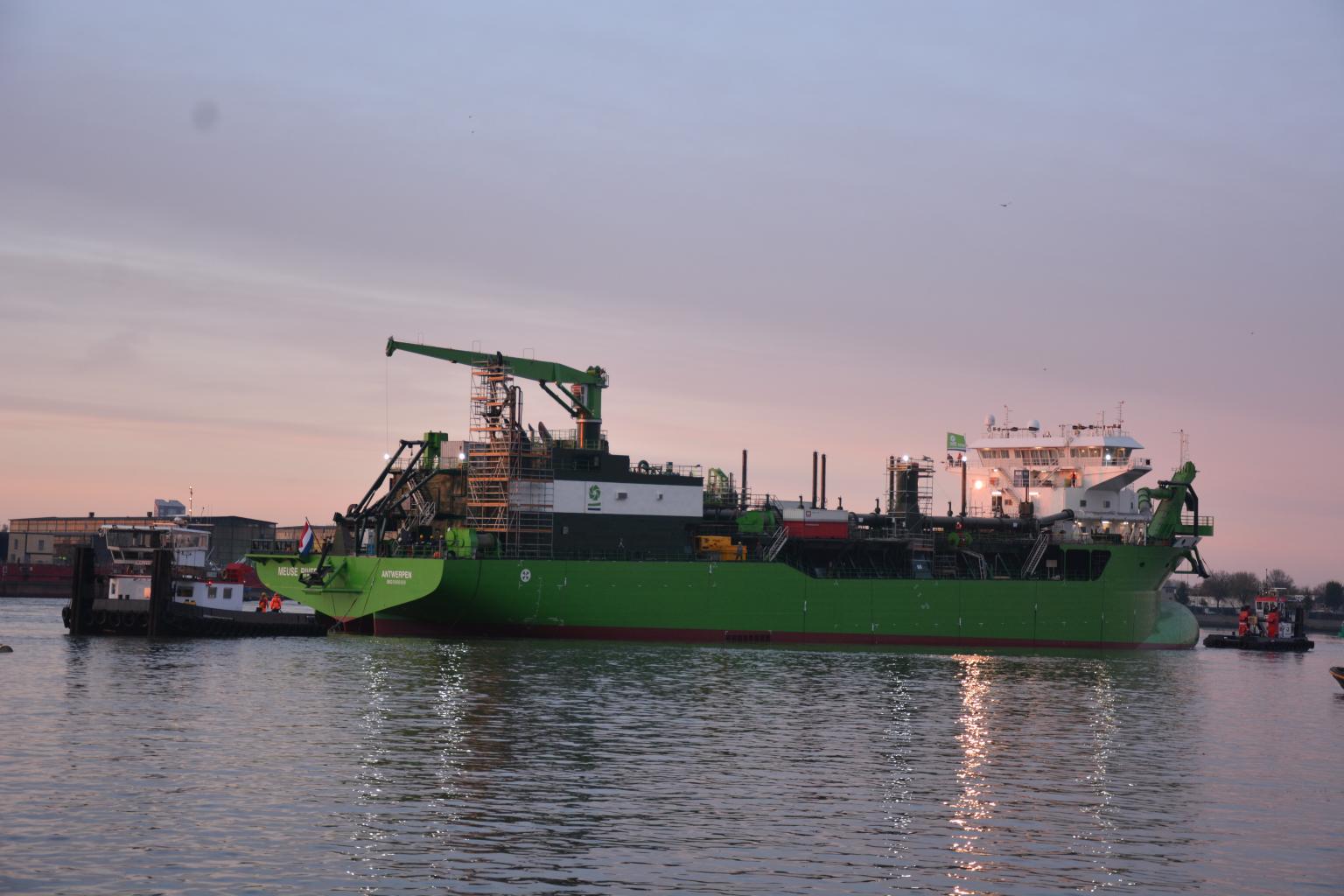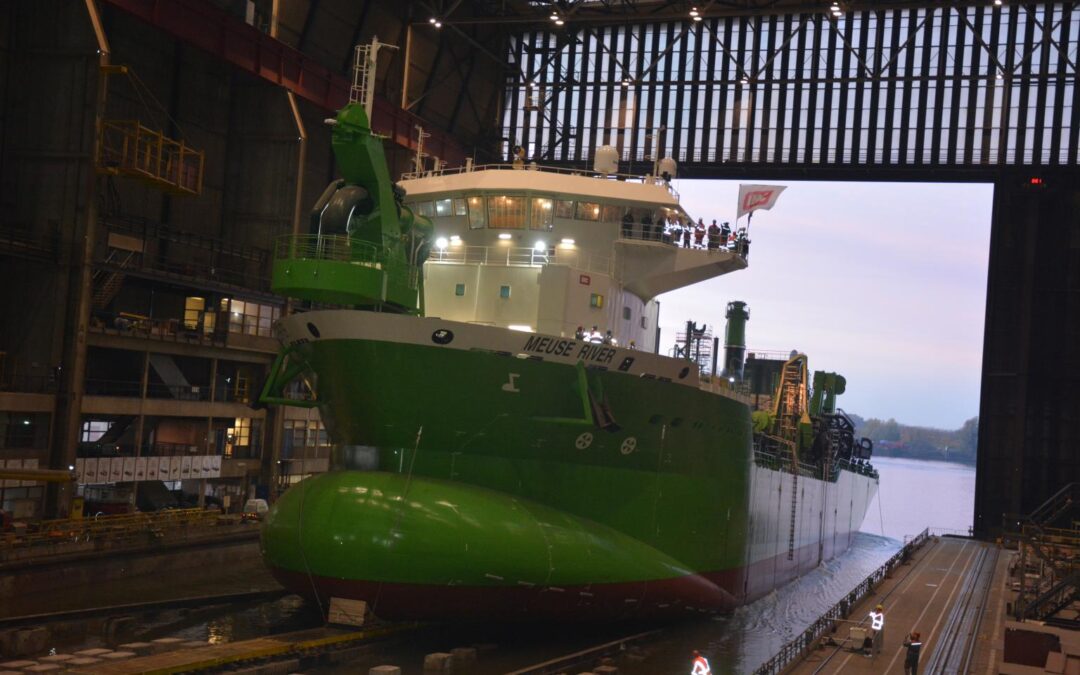Royal IHC has launched the 7950-cubic-metre hopper dredger Meuse River for Belgian dredging company DEME. Although construction is going to plan, long delivery times for the LNG tank do throw a spanner in the works as DEME had hoped to switch from “LNG ready” to LNG operation right from delivery.
The launch took place on 16 November at Royal IHC’s yard in Krimpen aan den IJssel, the Netherlands. The Meuse River has the same innovative design as the identical, award winning trailing suction hopper dredger Scheldt River (construction number 1282, imo 9778143), delivered by IHC on 26 September 2017.
Switch from LNG Ready to LNG
Initially, DEME planned to operate the Meuse River on marine gas oil (MGO), but it would have a dual-fuel engine, making it LNG ready. Yet, DEME’s decision to switch to LNG sooner while construction was already under way, meant the LNG tank was ordered relatively late in the building process. As a result, the LNG tank will not be available on time for vessel delivery. Therefore, the Meuse River will have to return to the shipyard for installation after it has been delivered.

Vessel Particulars
Vessel particulars of the Meuse River are: 5495 gross tonnage, 2837 nett tonnage, 8,979 deadweight, length over all (load lines) x beam x overall height (draught) = 115.80 (101.40) x 25.00 x 9.00 (6.66) metres. The dredging draught is 9.00 metres and the maximum dredging depth is 60 metres.
The hopper dredger, built under Bureau Veritas class, is equipped with two Wärtsilä-dual-fuel engines, one type 9L34DF of 4500 kW and one type 12V34DF of 6000 kW on two propellers for a speed of 14 knots.
The Meuse River features several energy smart technologies, developed by DEME and IHC, such as a hybrid dredge pump drive system to reduce the effect of load variations. For automation of the dredging process, IHC developed the intelligent IHC ECO automation package, which results in high dredge performance. Additionally, fuel efficiency is achieved with two-speed propulsion and combinator mode, optimising fuel consumption in sailing and dredging conditions.
Completion and handover is planned for April 2020.
Pictures by Gerrit J. de Boer/SWZ|Maritime.








